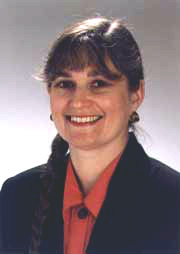Diversity, Not Divisiveness
by Kathleen Fuller, Ph.D.
August/September 2000

Diversity and multiculturalism are the buzzwords of the 90s. While appreciation of other cultures is vital, when we focus on/celebrate what separates us from others, there is the possibility that these differences can come to seem more important than our commonalties, leading to divisiveness. This also leads to the tendency to conflate specific physical phenotypes–what an individual looks like– with specific cultures.
This inappropriate conflation of phenotype and culture seems to be a particular problem when we look at how Americans with African descent are viewed. If a particular person’s phenotype falls within the perceived “African” phenotype, broadly defined, or if that individual has a parent of African descent, that individual is slotted into the “cultural” grouping of African-American or Black, which culture is supposedly quite different from that of European-American or White.
And if that person thus slotted does not behave as expected, then he/she is reviled as turning his/her back on “their” culture… on buying into the dominant culture… as being untrue to themselves. The sad fact of the matter is that it appears that many individuals, including some anthropologists and Americans of African descent appear to have bought into the slave owner’s notion of the “one drop rule”. No matter what the extent and diversity of an individual’s heritage, if that person has “one drop” of African “blood”, then that person is slotted into a group which is somehow supposed to be very different from the group to which those with European ancestry and no African ancestry belong.
Black American culture is essentially Southern American culture transferred to Northern urban centers (Payne 1998). It is not unique to those with heavy pigmentation. Nor should it be. Americans with African ancestry are no more African than are Americans with European ancestry Europeans. They are Americans, as any African or European would be happy to inform them.
Various surveys indicate that anthropologists generally do not support the biological validity of races. However, this appears to be more of an intellectual assessment. As a practice, it appears that most anthropologists, as with most people, really do think that if someone looks different from someone else, then that person really is different and that those differences are the most important aspects of that person.
It also appears that many individuals are invested in maintaining these differences. Non-European groups are told that they must retain/maintain their traditions, their values, their customs. That if they behave more like Europeans they are being acculturated/assimilated; that they are losing themselves.
This ignores the fact that cultures, and the people within those cultures, are constantly evolving as they interact with each other through mating, trading, education, and all other types of interaction. As John Moore (1994) has pointed out, we cannot effectively understand groups and cultures as distinct entities that somehow are “pure” and separate from other such entities. It is much more realistic to view peoples as components of the river of life. A river whose channels are constantly separating and recombining over time. There never was a “pure” cultural, ethnic, phenotypic group of people. There have always been interactions and exchanges with other groups. To repeat, a particular phenotype has no necessary association with a particular culture or subculture.
If we want to ease tensions in the world, we must focus on our commonalties, not on our differences. We need to Get Beyond Race and see individuals.
“I have always thought that one of the goals of teaching anthropology was to make people aware that but for a different shuffling of the cultural, linguistic, and genetic cards they might have come to be Inuit or O’otam. Instead, at the hands of some anthropologists the existentialist “other” has now been transformed into a bugaboo so impenetrable and incomprehensible that analytic and comparative understandings of social and cultural encounters have been virtually ruled out of court.”
Eric Wolf
Moore J. 1994 Putting Anthropology Back Together Again: The Ethnogenetic Critique of Cladistic Theory. American Anthropologist 96: 925-948.
Payne, R.J. 1998 Getting Beyond Race: The Changing American Culture. Westview Press.
Wolf E. 1994 Perilous Ideas: Race, Culture, People. Current Anthropology 35 (1): 1-12.
Please e-mail me with any comments/reactions you have to this essay.
Kathleen Fuller, MA, PhD, Director of AnthroHealthTM, is a Biological Anthropologist with extensive knowledge of Human History and Human Biology.
Also by Kathleen Fuller, Ph.D.
- The Abolitionist Examiner: We’re All Cherry Cupcakes
Copyright © 1998 Kathleen Fuller. All rights reserved.

